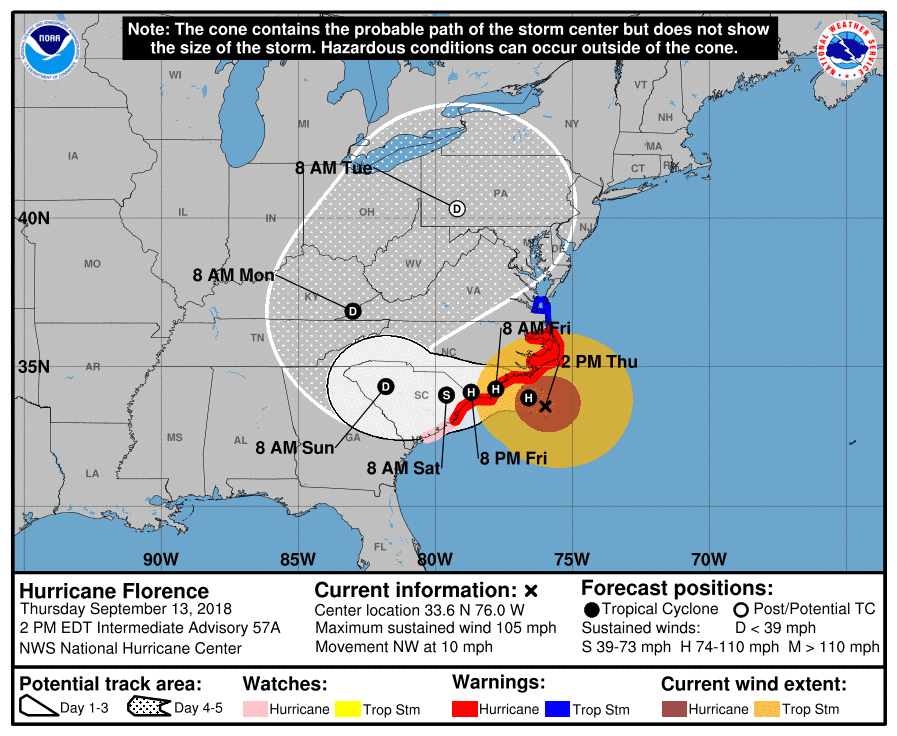Hurricane Florence began to inundate Frisco in North Carolina’s Outer Banks on Sept. 13.
The clip shows water pouring down a street in the Outer Banks, leading to a damaged pier.
Jenni Koontz, a photographer who shot the clip, wrote on Instagram at 12 p.m. Sept 13 that “the guy in the front end loader told me there is a hole in the road somewhere between the pier and Hatteras so I turned around. I believe an inlet may form between Hatteras and Frisco this weekend.”
Florence Updates
Florence’s hurricane-force winds extend up to 80 miles from the center, and tropical storm-force winds extend up to 195 miles. Overall, Florence is approximately400 miles in diameter, according to The Associated Press in a report on Sept. 13.
In its 2 p.m. Sept. 13 update, the NHC the storm is getting hit by the Outer Banks and southeastern North Carolina. Florence is currently about 110 east-southeast of Wilmington, North Carolina, and east of Myrtle Beach, South Carolina. The storm’s overall movement has slowed to 10 mph.
Hurricane and storm surge warnings are in effect for most of the North and South Carolina coastline.
AP reported that as many as 1.7 million people are under mandatory or voluntary evacuation in the region. As many as 10 million people live in areas that might be directly impacted by the storm.
Meanwhile, 1,200 flights have been grounded, AP noted.
Alex Sosnowski, AccuWeather’s senior meteorologist, wrote on Sept. 13 that “some communities in the Carolinas may be under water for days and possibly a week or more.”
North Carolina, South Carolina, Virginia, Maryland, and Georgia have declared states of emergency over the storm.
“As the rain pours down during the storm, inland evacuations may become necessary and the time for completing such tasks will come to an end as travel becomes increasing difficult and dangerous,” Sosnowski said.





Friends Read Free